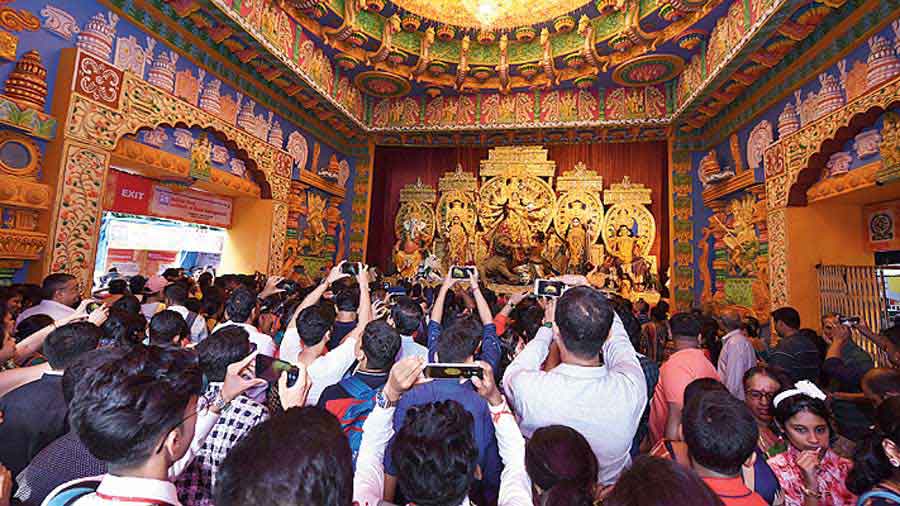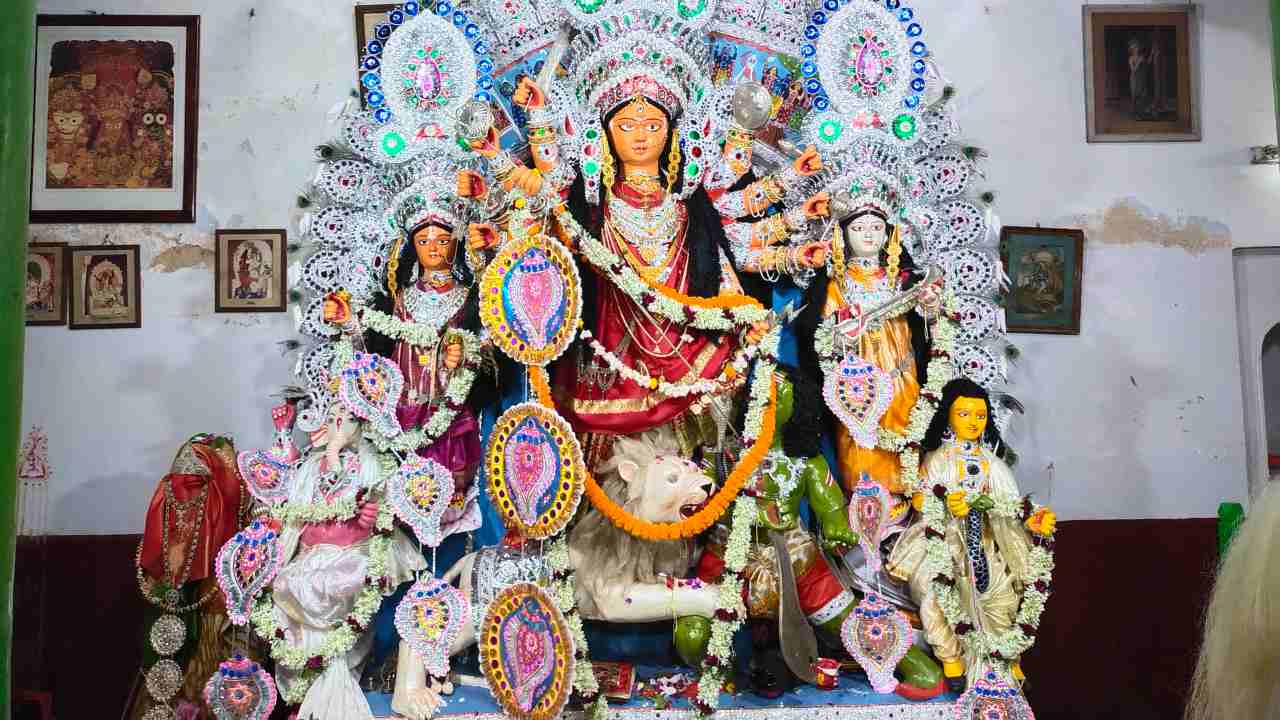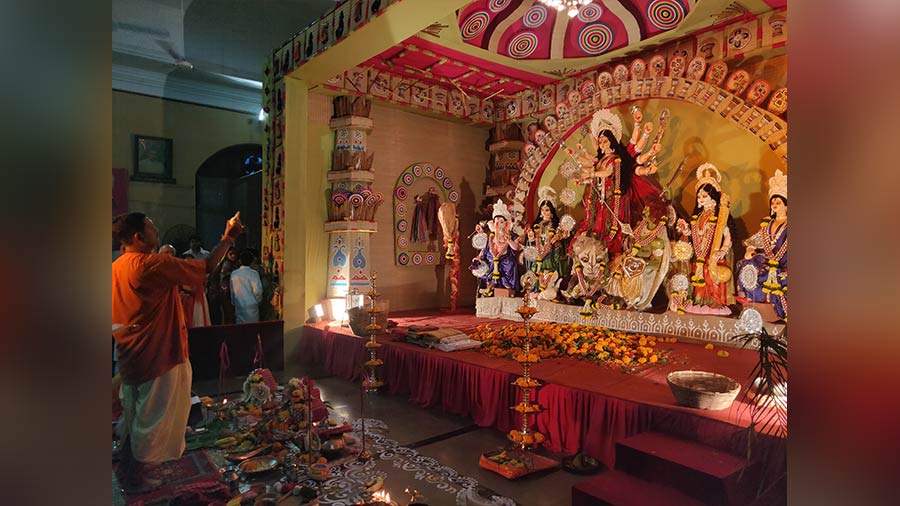A disgruntled eldery gentleman next to me in an auto says: “No city collapses like Kolkata does during Durga Puja.” The Bengali in me, born and brought up in Kolkata, is extremely offended for a second, before I find myself agreeing with him. It is 11.10am on Tritiya, I am drenched in sweat, the auto I’m in has been stuck at the same spot for 20 minutes and the college lecture I had set out for two hours ago is already underway. Over the past week, I’ve missed eight lectures on account of not being able to get to college on time.
Welcome to Durga Puja.
A sort of puja fatigue has gradually set in over the years
Growing up in Kolkata, the annual schedule has almost always revolved around Durga Puja — plans for NRI family members to return, the never-ending shopping lists and the Puja preparations that start months in advance. As a kid exposed to the fun parts of this annual cultural celebration — staying up till late, gorging on street food — it truly was the time of the year to wait for. Now, as a young adult and through conversations with peers, I’ve come to realise that a sort of Puja fatigue has gradually set in over the years. This is not to say that we, the so-called Gen Z (born between the late ’90s and the early 2010s) no longer desire to hold on to traditions, but that the Durga Puja excitement has long been dimmed by the reality of how it unfolds. A dimming that is accompanied by an extreme sense of guilt and FOMO (fear of missing out).
As with almost everyone, Durga Puja starts with Mahalaya for me. For years, it has been a struggle to wake up at the crack of dawn, but cranking up the old radio and listening to the voice of Birendra Krishna Bhadra flood the house made it worth it. With all educational institutions and workplaces back in full swing, this was the first Puja where the rush to wrap everything up before Panchami felt extremely real. On my part, a Master’s student, I had a big college fest and an important assignment due later in the week (after Mahalaya). Already sleep-deprived, I made the decision to give Mahishasura Mardini a miss. On eventually waking up, I prepared myself to feel horrible after seeing the social media updates of friends carrying on this tradition, only to find a handful of them had done so. As conversations progressed throughout the day, the reasons formed a pattern — adult friends had jobs or college assignments to cater to, some had a busy day ahead, some had to prioritise other stuff over crowding by the radio. A friend even told me that her new smartphone came without an FM radio option and sleeping was better than pretending to feel the same way about listening to the broadcast over YouTube.
The pitfalls of revenge festing
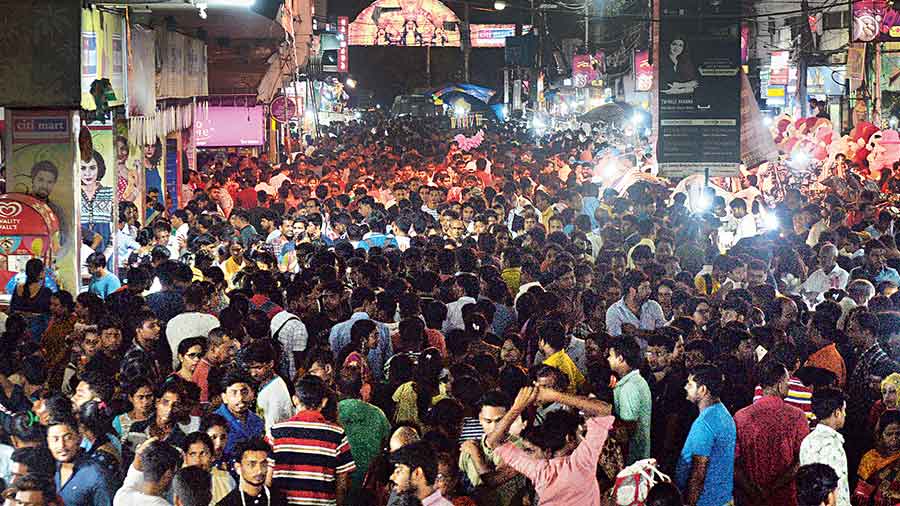
This year’s Puja saw an almost maniacal stubbornness to do everything that was denied to us for the past two years TT archives
The few days between Mahalaya and Sashthi are still packed with excitement, but they also come packed with chaos. With the big theme pujas — something most older Gen Z members did not grow up with — thrown open early, commuting becomes excruciating. Metros are packed beyond capacity while autos charge double the usual fare. The traffic coming to a standstill became so common a phenomenon this year that most of my college professors allowed students to walk in even when more than half the lecture was over.
In keeping with tradition, my grandmother had handed me some money to go shopping ahead of this year’s Puja, but one look at the serpentine queues outside trial rooms made me hop on to Amazon and Myntra. As was the case with most of my friends, some of them refusing to even set foot inside the crowded shopping centres. For the younger me, shopping for new clothes would have been the highlight of Puja — the day-long outings with parents, the thrill of finding “the one” (clothes and/ or pujo prem). But the restoration to post-pandemic normality this year brought along revenge festing, an almost maniacal stubbornness to do everything that was denied to us for the last two years. The result? For the pragmatic and timebound Gen Z, shopping moved online.
As a generation, we have lost interest in pandal-hopping
I spent almost two months trying to sync timetables with friends to meet up during Puja. With the onset of WFH culture, most of my peers, myself included, continued working and/or studying throughout, leaving us with limited time to go out. With restaurants not taking reservations, any place that required changing modes of public transport were immediately ruled out. None of my said friends wanted to go pandal-hopping, the common complaint being “boddo bhir” (it is too crowded). As a generation, thanks to swelling crowds and hyper-commercialisation of our favourite festival, we have lost interest in pandal-hopping. Why tread crowds only to watch people’s heads and smartphone cameras? Why walk ungodly distances when you can watch all the pandals on WhatsApp and Instagram stories?
Why the outings then, I asked myself? After all, no matter how exhausted I was, I dragged myself to planned lunches and posed for hundreds of photos for the single shot that ultimately made it to my Instagram feed. Perhaps the meet-ups, even with so much hassle, came from a desparate desire to hold on to whatever traditions we can. The nightlong addas that became customary during Puja had been out of fashion for quite some time. Perhaps the Puja outings became a way of embracing nostalgia, of remembering slower times. When pujo was just pujo. No added responsibilities, no endless stream of selfies. For every single person I met this Puja, the conversations remained the same, about how we used to go pandal-hopping, how buying clothes from shops was a must (desi parents back then would not dream of entertaining online shopping!), how there was space and time for everyone to enjoy.
‘Never again’
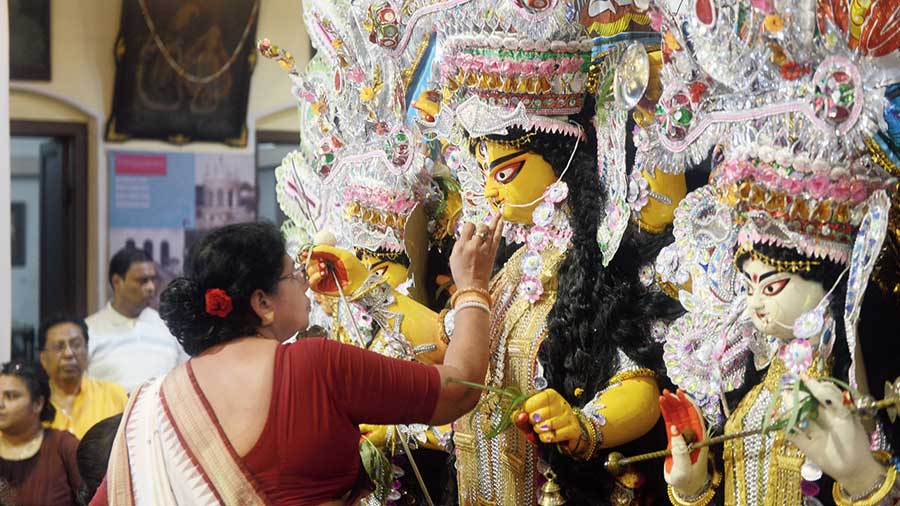
By Navami, most of the author’s friends had fallen sick, as had she TT archives
Every single day when I returned home from my Puja outings, I was greeted with the same question: “Kota thakur dekhli?” (How many pandals did you see?) The answer remained pretty much the same: “Dekhini.” (Didn’t see any.) Not for the lack of trying, though. Sometime on Saptami I did try to visit a pandal in north Kolkata. Ten minutes in, I realised why my initial decision of not visiting pandals was correct. Not only was it crowded, it was also situated in a narrow alley where it was getting increasingly difficult to breathe. At some point, my sister called out to me, asking me to be careful of a step in front. Forget the step, there was not even enough space to look down or to see where I was going. Forty-five minutes later, after having somehow managed to fight my way out of a sea of people, I told myself: “Never again.”
By Navami, most of my friends were sick. So was I. The erratic schedule had messed with our routines and wreaked havoc on our bodies, as had the substandard food served even at the best restaurants that barely managed to keep up with the crowds. It will be some time before we can recuperate from Puja. And yet, while the boron was in full swing on Dashami and the idols were being prepared for immersion, something tugged at the heartstrings. Saying goodbye to Puja, however inconvenient it may have been, was difficult, an inexplicable combination of emotions.
Durga Puja will return next year, of course. So will Gen Z, but with even fewer traditions. With tighter schedules and hopefully with more concern for long-term wellbeing. As the crowds continue to swell and the world continues to hustle, how long will it be before all traditions are forgotten, before Puja simply means exhaustion and no excitement?
